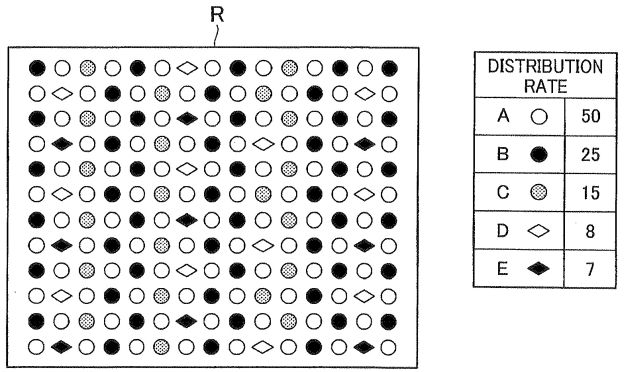in this decision, the board of appeal once more used the concept of the notional business person to draw the line between technical and non-technical features. Here are the practical takeaways from the decision T 2314/16 (Distributing rewards by assigning users to partial advertisement display areas/RAKUTEN) of 7.9.2020 of Technical Board of Appeal 3.5.01:
Catchword
The specification of the business method ended with how to determine the reward distribution ratio. The features of dividing the advertisement display area into partial areas and allocating each partial area to a user such that when the partial area is clicked on the user gets a reward, were based on technical considerations of the web page system. It was not motivated by any business considerations. ... In order to come up with this idea, one needs to understand how a web site is built, and in particular how an image map works. Thus, this feature cannot be part of the non-technical requirements. Instead it is part of the solution that has to be evaluated for obviousness. (See point 2.10 of the reasons)
The invention
This European patent application concerns the distribution of rewards to participants in an affiliate marketing scheme. Affiliate marketing is an advertising model in which an influencer receives a reward for advertising a product or service, e.g. by including a link on a blog or endorsing a product on social media.
In the invention, the influencers are each allocated a portion of an advertisement banner displayed on a web site (Figures 5A and 5B). The areas are not visible to the visitor of the web site, but the visitor just sees an advertising banner. When the visitor clicks on the banner, the influencer whose portion was clicked on gets a reward. Over time, the rewards will be distributed according to the sizes of the image portions.
The idea was to allocate the partial areas such that the reward distribution rates match the degree of contribution of each user (influencer) to the advertising of the product or service.

Fig. 5B of EP 2 587 446
Here is how the invention was defined in claim 1:
Claim 1 (main request)
An information providing device which provides display data including an advertisement display area, to a terminal device through a network, the information providing device comprising:
a user information memory means that associates and stores coordinate information of a partial area included in the advertisement display area, and user specifying information for specifying a user, per partial area;
a transmitting means that transmits display data including the advertisement display area, to the terminal device;
a position information acquiring means that acquires a coordinate on a web page specified in the advertisement display area, from the terminal device;
a partial area specifying means that by comparing coordinate information of each partial area with the acquired coordinate, specifies the partial area including the coordinate; and
a reward information memory means that specifies the user based on the partial area specified by the partial area specifying means and the user specifying information in the user information memory means, and associates and stores information of a reward paid for the specified user.
Is it patentable?
The first-instance examining division had refused the patent application based on lack of inventive step, the main argument being that the distinguishing features constituted an obvious implementation of a set of non-technical requirements.
On appeal, it was common ground that claim 1 contains a mixture of technical and non-technical features. The board noted that the information providing device is clearly a technical device, whereas the distribution of rewards to influencers is a business idea.
First of all, the board therefore gave a nice summary of the EPO's approach to mixed-type inventions:
The established approach for dealing with such mixed-type inventions is the "Comvik approach" (T 641/00 – Two identities/COMVIK). In this approach, only the features which contribute to the technical character of the invention may be taken into account in the assessment of inventive step. Non-technical features which do not make such a contribution are instead treated as being part of the technical problem to be solved, which is often formulated as a set of requirements to implement. Thus, as the appellant argued, a crucial step in this approach is to distinguish between the technical features and the non-technical features.
The appellant is correct in that there is no positive definition of 'technical' in the EPC.
However, Article 52(2) EPC provides a non-exhaustive list of subject-matter that should not be regarded as technical inventions, for example "schemes, rules and methods for performing mental acts, playing games or doing business, and programs for computers" (Article 52(2)(c) EPC).
Also, over the years, the case law has provided further guidance on the issue of technicality. In COMVIK, a technical feature was defined as a feature which contributed to the solution of a technical problem by providing a technical effect (reasons, point 6). Thus, features which are prima facie non-technical may interact with the technical subject matter of the claim so as to produce a technical effect (T 154/04 – Estimating sales activity/DUNS LICENSING ASSOCIATES, reasons points 13 and 15). The technical effect must be actually achieved by the feature in question, and it must not be a mere consequence of a modified business scheme (see T 258/03 – Auction method/HITACHI, which held that method steps consisting of modifications to a business scheme and aimed at circumventing a technical problem rather than solving it by technical means could not contribute to the technical character of the subject-matter claimed).
In the field of computer-implemented methods, the technical effect of the invention is often its implementation on technical means. In such cases, it is not always straightforward to determine which features contribute to the implementation, and which features are part of the non-technical requirements to be implemented. Generally speaking, features which are based on technical considerations of the technical system on which the requirements are implemented have technical character and thus may contribute to inventive step (T 792/92 – General purpose management system). However, pure software concepts do not contribute to the technical implementation, because programs for computers are excluded matter under Article 52(2) EPC (T 1755/10 – Software structure/TRILOGY, reasons point 6, and G 3/08 – Programs for computers, point 13.5).
In T 1463/11 (Universal merchant platform/CardinalCommerce), the Board introduced the concept of the notional business person to help separate business considerations and technical considerations. The business person, who is just as fictional as the skilled person in Article 56 EPC, may formulate business requirements but will not include any technical matter. This approach ensures that, in line with the Comvik approach, all the technical matter, including known or even notorious matter, can contribute to inventive step and is therefore considered for obviousness.
The appellant argued that the invention produced a technical effect which went beyond the mere implementation of a business method, namely reducing the processing load for calculating the reward rates. But the Board was not persuaded that this effect is actually achieved, for two reasons:
Firstly, the effect is not derivable based on a comparison between the claimed invention and the starting point in the prior art. In the problem and solution approach, the objective technical problem is formulated based on the difference between the claimed subject-matter and the prior art chosen as the starting point (the closest prior art). In the present case, the starting point is a server-side image map. The effect of reducing the computational load is based on a comparison between the claimed invention and another, hypothetical method of distributing rewards. Since the effect cannot be derived from the difference between the claimed invention and the server-side image map, it cannot form the basis of the technical problem. Thus, in the Board's view, the technical problem vis-à-vis the server-side image map is merely the implementation of the reward calculation.
Secondly, even compared with a method of calculating rewards using division, the invention does not contain enough technical detail to credibly achieve the effect argued by the appellant. For there to be a reduction in processing load, the computational savings of avoiding division must outweigh the complexity introduced by processing image maps. Since the application does not contain any detailed embodiment of the server-side processing of coordinate information, it is not clear that there is a reduction in computation load, let alone a reduction over the whole scope claimed. This shows the importance of including an embodiment in support of the technical effects relied on, because this might enable them to be verified.
The technical problem was thus formulated as the implementation of the reward distribution. The remaining question was which features are part of the requirement specification and which features are part of the technical implementation:
The appellant argued that the specification of the business method ended with how to determine the reward distribution ratio. The features of dividing the advertisement display area into partial areas and allocating each partial area to a user such that when the partial area is clicked on the user gets a reward, were based on technical considerations of the web page system. It was not motivated by any business considerations.
The Board agrees with the appellant that the allocation of users to partial image areas is not within the domain of the business person. In order to come up with this idea, one needs to understand how a web site is built, and in particular how an image map works. Thus, this feature cannot be part of the non-technical requirements. Instead it is part of the solution that has to be evaluated for obviousness.
Starting from the HTML server-side image map and given the problem of implementing the business requirement of distributing rewards to a number of users according to certain reward distribution rates, the Board judges that it would not have been obvious to assign users to partial areas of an image as in claim 1. Although the means for implementing this was available in HTML, there was no motivation for the skilled person to do so.
Accordingly, claim 1 was found to involve an inventive step. The board thus remitted the case to the examining division with the order to grant a patent.
More information
You can read the whole decision here: T 2314/16 (Distributing rewards by assigning users to partial advertisement display areas/RAKUTEN) of 7.9.2020
The content of this article is intended to provide a general guide to the subject matter. Specialist advice should be sought about your specific circumstances.

